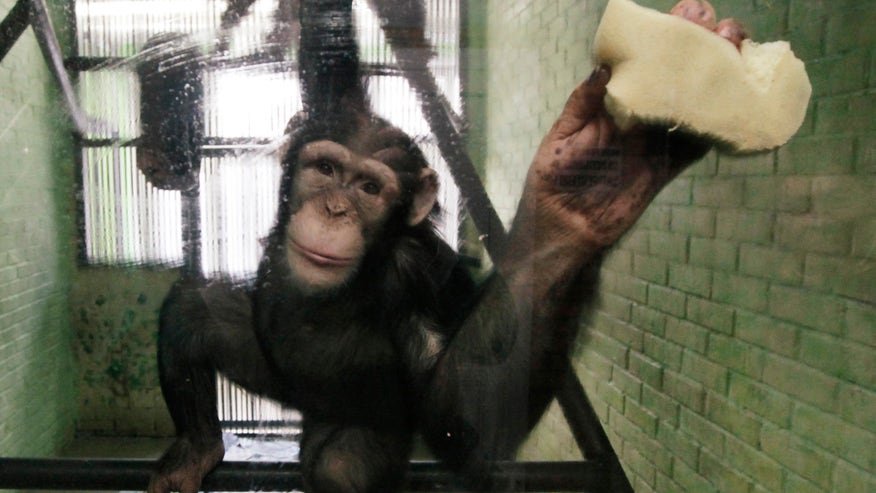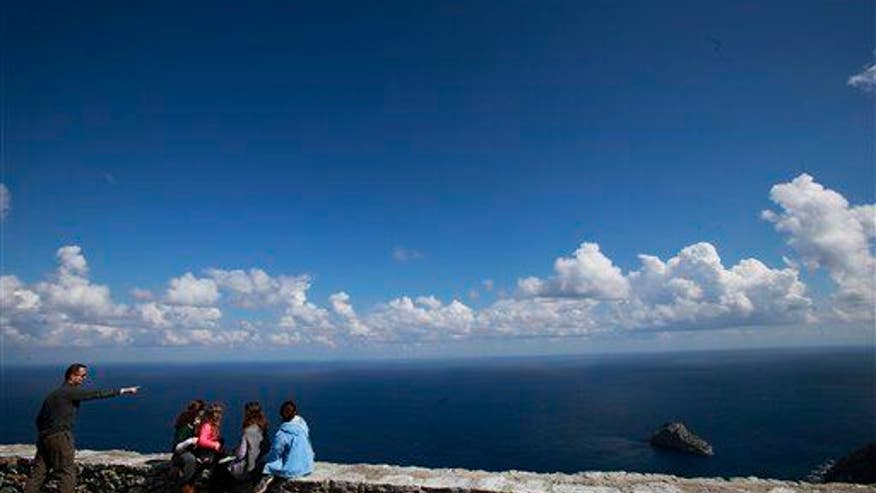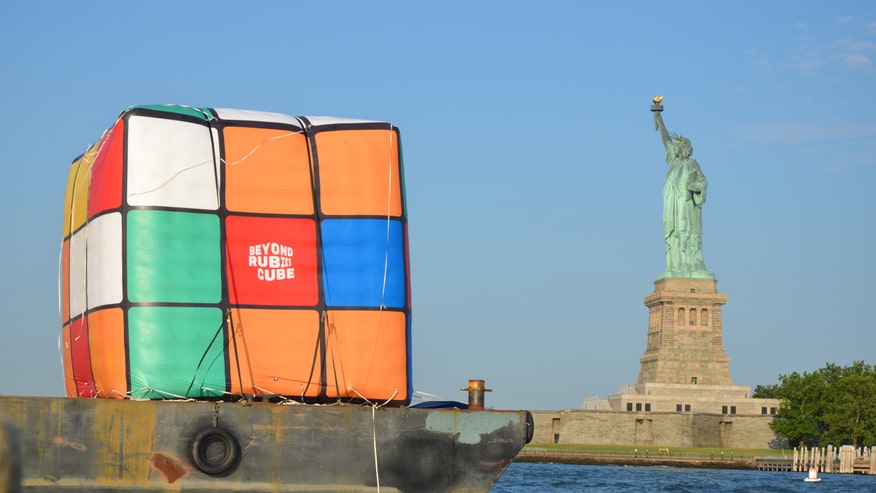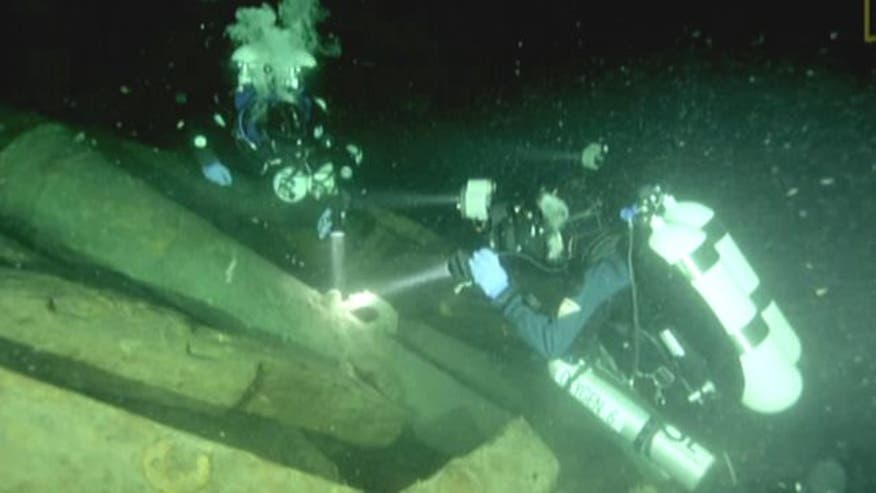
Anfisa, a 8-year-old female chimpanzee, washes a window of her enclosure where she lives at the Royev Ruchey zoo in Krasnoyarsk, Siberia, January 29, 2013.REUTERS/Ilya Naymushin
Chimpanzees don't just get their smarts by aping others chimps, like humans, inherit a significant amount of their intelligence from their parents, new research reveals.
Researchers measured how well 99 captive chimpanzees performed on a series of cognitive tests, finding that genes determined as much as 50 percent of the animals' performance.
"Genes matter," said William Hopkins, a neuroscientist at Georgia State University in Atlanta and co-author of the study published today (July 10) in the journal Current Biology. [The 5 Smartest Non-Primates on the Planet]
"We have what we would call a smart chimp, and chimps we'd call not so smart," Hopkins told Live Science, and "we were able to explain a lot of that variability by who was related to each other."
Animal 'intelligence'
People don't usually talk about animal intelligence, but rather animal learning or cognition. American psychologists John Watson and B.F. Skinner developed the notion of behaviorism in the early 20th century, which said that scientists should study only the behavior of animals, not their mental processes. This was the dominant approach until about 1985.
But in the last few decades, studies have shown convincingly that animals are capable of cognition. What remained unknown was the mechanism behind it, Hopkins said. Many studies of human twins suggest that intelligence is heritable, but few studies have looked at whether this is true in other primates.
In the new study, Hopkins and his colleagues gave chimpanzees at the Yerkes Primate Center, in Atlanta, a battery of cognitive tests adapted from ones developed by German researchers for comparing humans and great apes. The tests measured a range of abilities in physical cognition, such as the ability to discriminate quantity, spatial memory and tool use. The tests also examined aspects of social cognition, such as communication ability.
The researchers created a genetic pedigree of the chimps, showing how they were related to each other. This would be like taking a group of 300 random people, sticking them on another planet where they could breed and have children, and testing their intelligence 50 years later, Hopkins said.
About half of the variability in the chimps' performance on the cognitive tests could be attributed to their relatedness, the results showed. "I was a little surprised by that. It was higher than I thought would be," Hopkins said.
In addition, neither the sex of the animals nor their rearing history (whether they were raised by their mother or by humans) seemed to affect cognitive performance, the researchers found.
Nature vs. nurture
In humans, some people believe that intelligence is primarily a result of schooling. But for chimps, this can't be a factor, since they don't go to school, Hopkins said. "The fact that we can establish this in an organism that has none of the baggage of our social-cultural systems points strongly to the role that genes play in their intelligence," he said.
Alex Weiss, a psychologist who studies nonhuman primates at the University of Edinburgh in Scotland, who was not involved in the study, said the findings were "really interesting, particularly as these findings mirror what has been found for decades in studies of human twins and human families." It provides just one more example of the similarities between chimpanzees and humans, Weiss told Live Science.
But while the results suggest that "nature" matters a bit more than "nurture" for intelligence, Hopkins said other findings don't support that interpretation. Environment and experience still have an influence on cognitive performance. For example, if you compare chimps that have been trained to use sign language to ones that haven't, the trained animals do much better on cognitive tests, he said. "So there's a case where nurture really matters."
Curiously, the results of the study support the idea of general intelligence, rather than the theory of multiple intelligences such as mathematical, verbal or musical ability that American psychologist Howard Gardner developed. General intelligence suggests that individuals posses a general learning ability that makes it likely that a person who possesses one form of intelligence will posses others.
Next, the researchers will attempt to replicate their findings in another colony of chimpanzees. They also hope to incorporate brain scans of the chimps, to establish if heritable features of intelligence correlate with specific structures in the brain's cortex. Finally, they aim to look for specific genes correlated with intelligence, to see how those might be passed down in the chimpanzees.
View the original article here
 Anfisa, a 8-year-old female chimpanzee, washes a window of her enclosure where she lives at the Royev Ruchey zoo in Krasnoyarsk, Siberia, January 29, 2013.REUTERS/Ilya Naymushin
Anfisa, a 8-year-old female chimpanzee, washes a window of her enclosure where she lives at the Royev Ruchey zoo in Krasnoyarsk, Siberia, January 29, 2013.REUTERS/Ilya Naymushin Tourists admire the Aegean, which is home to the island of Astypalaia.AP Photo/Dimitri Messinis
Tourists admire the Aegean, which is home to the island of Astypalaia.AP Photo/Dimitri Messinis An illustration of Bronze-Age lake dwellers in Switzerland and Germany, who may have buried children's skulls at the perimeter of their settlements as gifts to lake gods to ward off flooding.Benjamin Jennings et al, Antiquity 2014
An illustration of Bronze-Age lake dwellers in Switzerland and Germany, who may have buried children's skulls at the perimeter of their settlements as gifts to lake gods to ward off flooding.Benjamin Jennings et al, Antiquity 2014 Beyond Rubik's Cube at Liberty Science Center
Beyond Rubik's Cube at Liberty Science Center

 Satellite image of a toxic algae bloom in Lake Erie in 2011, one of the worst blooms in recent years.MERIS/ESA, processed by NOAA/NOS/NCCOS
Satellite image of a toxic algae bloom in Lake Erie in 2011, one of the worst blooms in recent years.MERIS/ESA, processed by NOAA/NOS/NCCOS